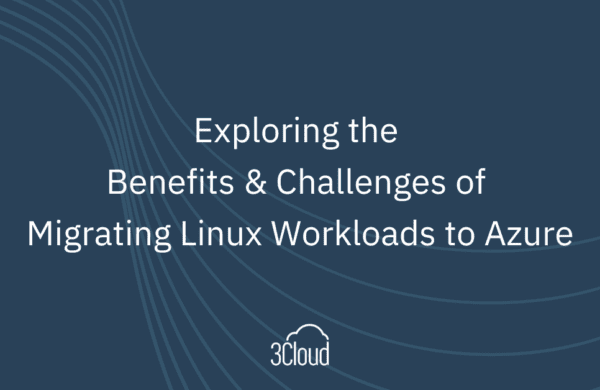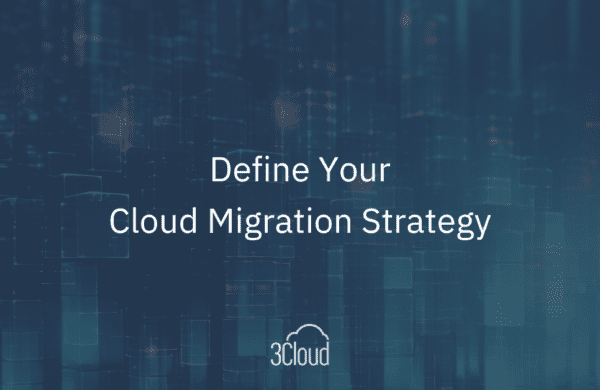Businesses invest in cloud technology to optimize their IT infrastructure and fuel growth. Cloud migration empowers organizations to gain agility, streamline operations, and enhance customer experiences.
Optimizing IT infrastructure varies from one organization to another, often encompassing a blend of public cloud, private cloud, and traditional on-premises environments. It’s estimated that 94% of enterprises use some form of cloud service.
Understanding Cloud Migration
Cloud migration refers to the process of moving digital business operations, data, applications, and other elements from on-premise hardware or different cloud environments to a cloud infrastructure. This transition aims to enhance business functionality by leveraging the cloud’s scalability, flexibility, and advanced features. The migration process is segmented into six phases to ensure a seamless transition the cloud. Each phase plays a crucial role, working to facilitate a successful and seamless migration. Understanding each one is the cornerstone to leveraging the full potential of a cloud environment for business growth.
For organizations concerned about operational disruptions, transitioning to a cloud infrastructure doesn’t have to be an all-or-nothing decision. Businesses can start reaping the benefits of cloud technology while maintaining on-premises assets by adopting a hybrid cloud model. For those considering cloud migration, we’ll outline the basic steps here.
6 Cloud Migration Steps
Migrating to a cloud environment can unlock operational efficiencies, agility, scalability, and enhanced security. Businesses can migrate workloads from virtually any source and promptly capitalize on the advantages of hybrid cloud:
1. Develop a Strategy
Before embarking on your cloud journey, define your objectives. Begin by collecting baseline metrics of your IT infrastructure, mapping workloads to your assets and applications. Establishing key performance indicators (KPIs) such as page load times, response times, availability, CPU usage, memory usage, and conversion rates based on your current state is essential. Prioritize business objectives over technology in your strategy development.
2. Choose which Applications to Migrate
Not all applications are cloud-friendly. Some perform better in private or hybrid clouds than in public clouds. A full analysis of architecture, complexity, and implementation is easier before migration. When evaluating applications for migration, consider:
- Which applications can be moved as-is, and which require a redesign?
- If a redesign is needed, what level of complexity is involved?
- Does the cloud provider offer migration without reconfiguring workloads?
- What’s the return on investment and time frame for each application?
- For cost-effective and secure migrations, which cloud environment—public, private, or multicloud—suits each application
3. Secure the Right Cloud Provider
Choose a cloud provider capable of guiding you through the migration process and beyond. Find out How to Choose a Cloud Solution Provider. On a high level, be sure to ask these questions.
- What tools, including third-party solutions, does the provider offer for simplifying migration?
- What is the provider’s level of experience in managing cloud migrations?
- Can the provider support public, private, and hybrid environments at scale?
- How can the provider address complex interdependencies, inflexible architectures, or outdated technology?
- What level of support can the provider offer throughout the migration process?
4. Maintain Data Integrity and Operational Continuity
Managing risk during migration is critical, especially when dealing with sensitive data. Post-migration validation of business processes is essential to ensure automated controls produce consistent outcomes without disrupting operations. Learn about Cloud Security and the importance establishing an effective threat management system to safeguard and monitor your data and applications in the cloud.
5. Adopt an End-to-End Approach
Your chosen service provider should have a robust, proven methodology to handle every aspect of the migration process. This includes managing complex transactions consistently and globally. Ensure these details are clearly defined in the service-level agreement (SLA), with agreed-upon milestones for progress and results.
6. Execute Your Cloud Migration
If you’ve diligently followed the previous steps, this final stage should proceed smoothly. However, the complexity and architecture of your application(s) and data will partially determine how you migrate to the cloud.
What to Consider before Cloud Migration
Before starting to migrate to the cloud, it is important to assess the business objectives and requirements that dictate your migration strategy. Understanding specific needs of your business can help you to build a migration plan that aligns with your organizational goals and enhances operational efficiency. It is also important to evaluate the suitability of applications for migration. Not all applications will benefit from a cloud environment so you should put together a detailed analysis of each application’s architecture, dependencies, and performance metrics is essential to determine which applications should be migrated and how to optimize them for the cloud.
Addressing security and compliance is central to a successful cloud migration strategy. Your company must ensure that the cloud environment adheres to regulatory requirements and industry standards to safeguard sensitive data and maintain trust with your customers. Estimating costs and ROI is another critical step in the pre-migration phase. A robust financial analysis should take into account potential cost savings, the total cost of ownership, and the expected return on investment to build a sound migration plan.
Building a skilled migration team is vital to success. A team with expertise in cloud technologies can navigate the complexities of migration, ensuring a smooth transition with minimal disruptions. Leveraging the knowledge and skills of experienced professionals can be a game-changer for a successful cloud migration.
Planning and Preparing for Cloud Migration
Planning and preparing for cloud migration is a multifaceted process that begins with conducting a thorough inventory. This involves cataloging all hardware, software, applications, and data to have a clear understanding of your assets at hand. It is equally important to identify the dependencies and interdependencies among applications and systems to ensure a seamless transition.
Establishing clear migration goals and success criteria is another pivotal step in the planning phase. These objectives should be SMART – Specific, Measurable, Achievable, Relevant, and Time-bound, to facilitate a successful migration process. Following initial assessments, you should develop a comprehensive migration strategy and roadmap that will become the cornerstone of the migration process. This strategy should delineate the migration methods to be used, potential challenges, and the solutions to mitigate them, ensuring a path that aligns with the organization’s broader objectives.
Lastly, create a detailed timeline and resource allocation plan. This involves setting realistic timelines for each migration stage and allocating the necessary resources to avoid bottlenecks. By planning each step and preparing for contingencies, your company can pave the way for a successful cloud migration, steering clear of common pitfalls.
Want help determining where to start? Our Migration Jumpstart will connect you with an Azure Expert.
Ensuring a Smooth Transition and Minimizing Downtime
Ensuring a smooth transition and minimizing downtime during cloud migration is a critical aspect that hinges on several processes. Implementing proper change management processes is fundamental to navigating the complexities of migration, helping to streamline alterations and maintain control throughout the transition. Another, must-have step is open and continuous communication with stakeholders and end-users to manage expectations and keep all parties informed of the progress, as well as any potential disruptions. To safeguard against data loss and downtime, implementing redundancy and failover mechanisms is a prudent strategy, providing a safety net in case of system failures. Conducting thorough testing and validation before the full-scale migration ensures that all systems operate seamlessly in the new environment. Following your migration, it’s very important to monitor performance diligently and address any issues promptly, fostering a cloud environment that is both resilient and efficient.
Building a Business Case for Cloud Migration
Building a business case for cloud migration requires delineating the benefits that a transition to the cloud can have, including enhanced scalability, cost-efficiency, and business continuity. Your company also need to consider whether to undertake the migration process in-house or to leverage the expertise of external service providers, weighing the pros and cons of each approach to make an informed decision. This involves an analysis of the current infrastructure and a well-articulated roadmap that aligns the cloud migration strategy with the overarching business objectives.
The Digital Imperative
As Microsoft CEO Satya Nadella said, “The digital imperative is for every organization.” All businesses need to do more with less to remain competitive, and cloud migration is the first step.
Cloud migration helps you optimize your IT environment and delivers tangible benefits such as accelerated adoption, cost-effectiveness, and scalability, which, in turn, drive business innovation and digital transformation. Adopting the cloud with a phased approach, carefully selecting which applications and workloads to migrate, enables companies to reap these benefits without disrupting their business operations.
By following these migration recommendations, organizations can embark on a successful cloud migration journey to drive growth, efficiency, and customer satisfaction. By adhering to these six steps, your company can navigate the complex landscape of cloud migration with confidence, setting the stage for enhanced efficiency, security, and scalability in their operations. Remember, the journey doesn’t end with the migration– it’s a continuous process of optimization to leverage the full potential of the cloud environment.
Contact us for more information on migrating data and applications to the cloud.




